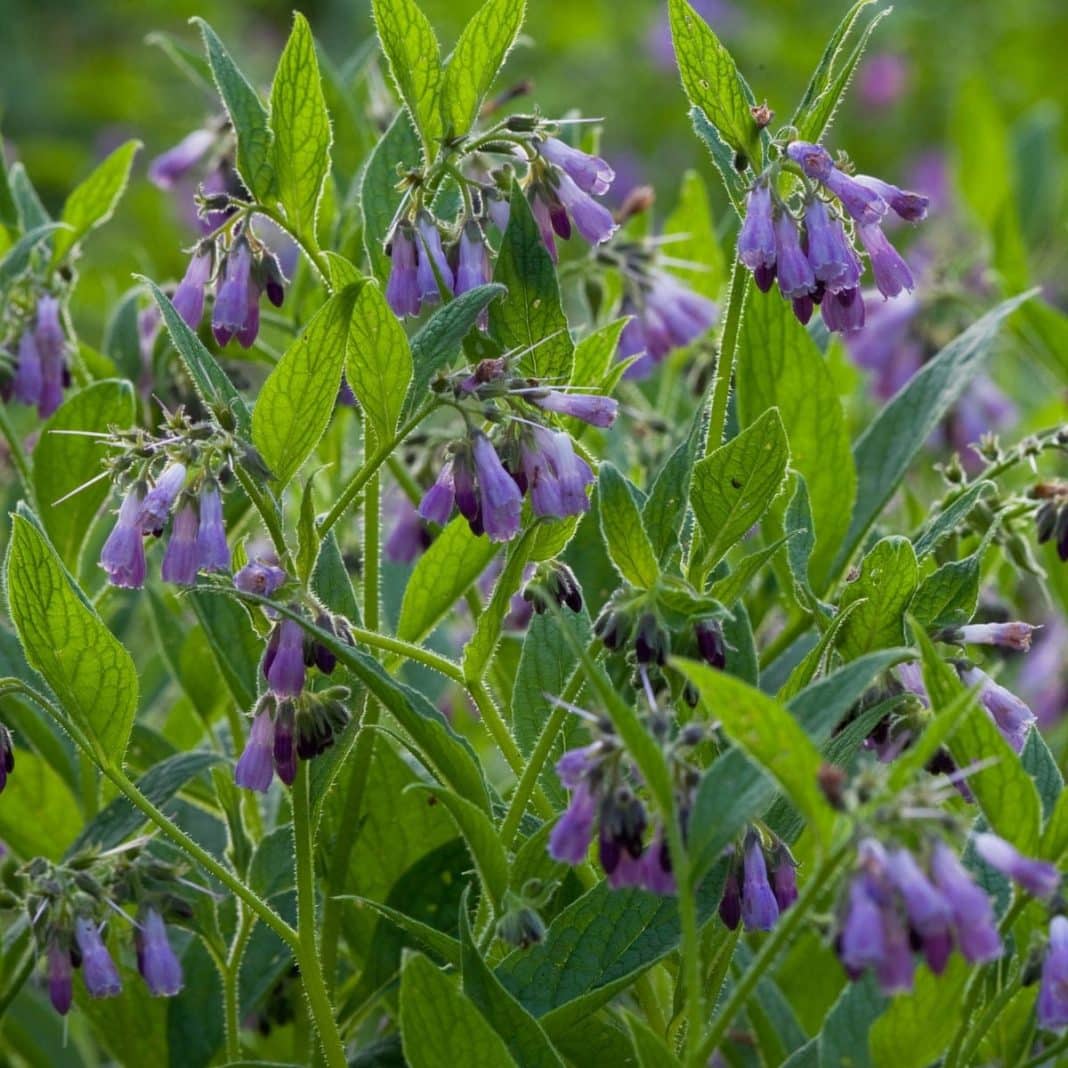Comfrey is a perennial flower that has a vigorous growth rate often attracting bees and other pollinators into your garden.
It has large, pointed, dark green leaves up to 8in long that have a coarse, hairy texture, with lower leaves being larger than upper ones.
Clusters of tiny bell-shaped flowers bloom on drooping stems in late spring.
Comfrey is highly adaptive to a variety of growing conditions requiring very little maintenance and will mostly take care of itself, except needing water during prolonged dry spells.
Best to grow in a container or raised garden bed, instead of the ground, as the plant is difficult to eradicate if you ever want to remove it.
Any small portion of the root left in the soil after you dig up the plant will likely grow a new plant.
Cutting back the stems after the plant flowers will help the plant rebloom.
Plant in full sun to partial shade, as it needs at least three hours of direct sunlight most days.
Above ground it will die back in late autumn, but the roots will remain, and the plant will grow again in spring.
In the second year of the plant’s life, after flowering, cut back to about 6in above the ground during winter, to encourage new growth. In the later years don’t prune as severely.
It’s easier to propagate comfrey from root cuttings, as from seed it requires a winter chilling period to germinate and also not see any germination for two years. Note: Comfrey is toxic to humans and pets.






